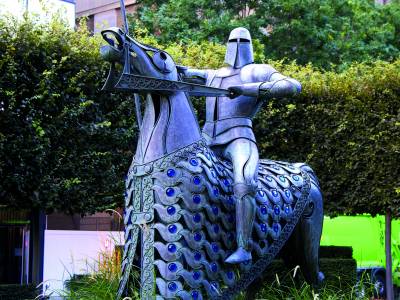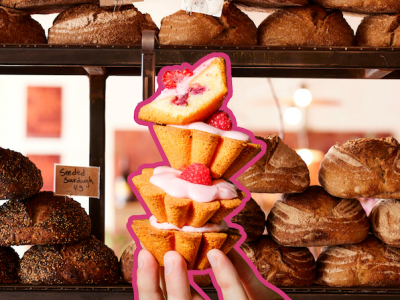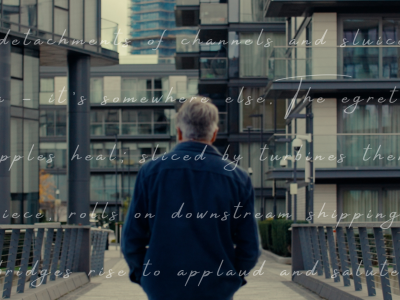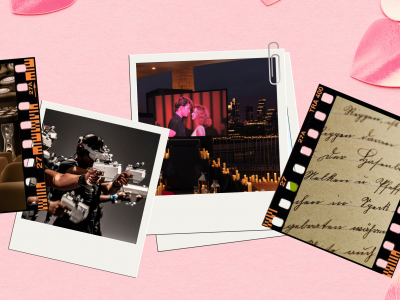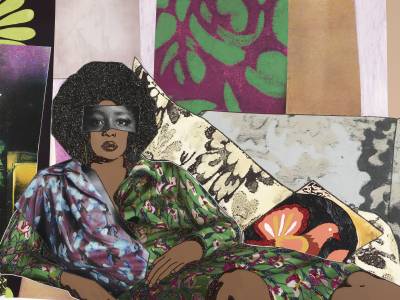A Walking Tour of London’s Animal Statues
10th February 2025
Animals have played a multitude of roles in the City of London’s 2,000-year history, so there is a veritable menagerie of stone, bronze and iron beasts lurking around every corner. Alison Turner selects some of the most fascinating animal statues in London to seek out, from domestic and real to exotic and mystical.
Photography by Edmund Sumner.
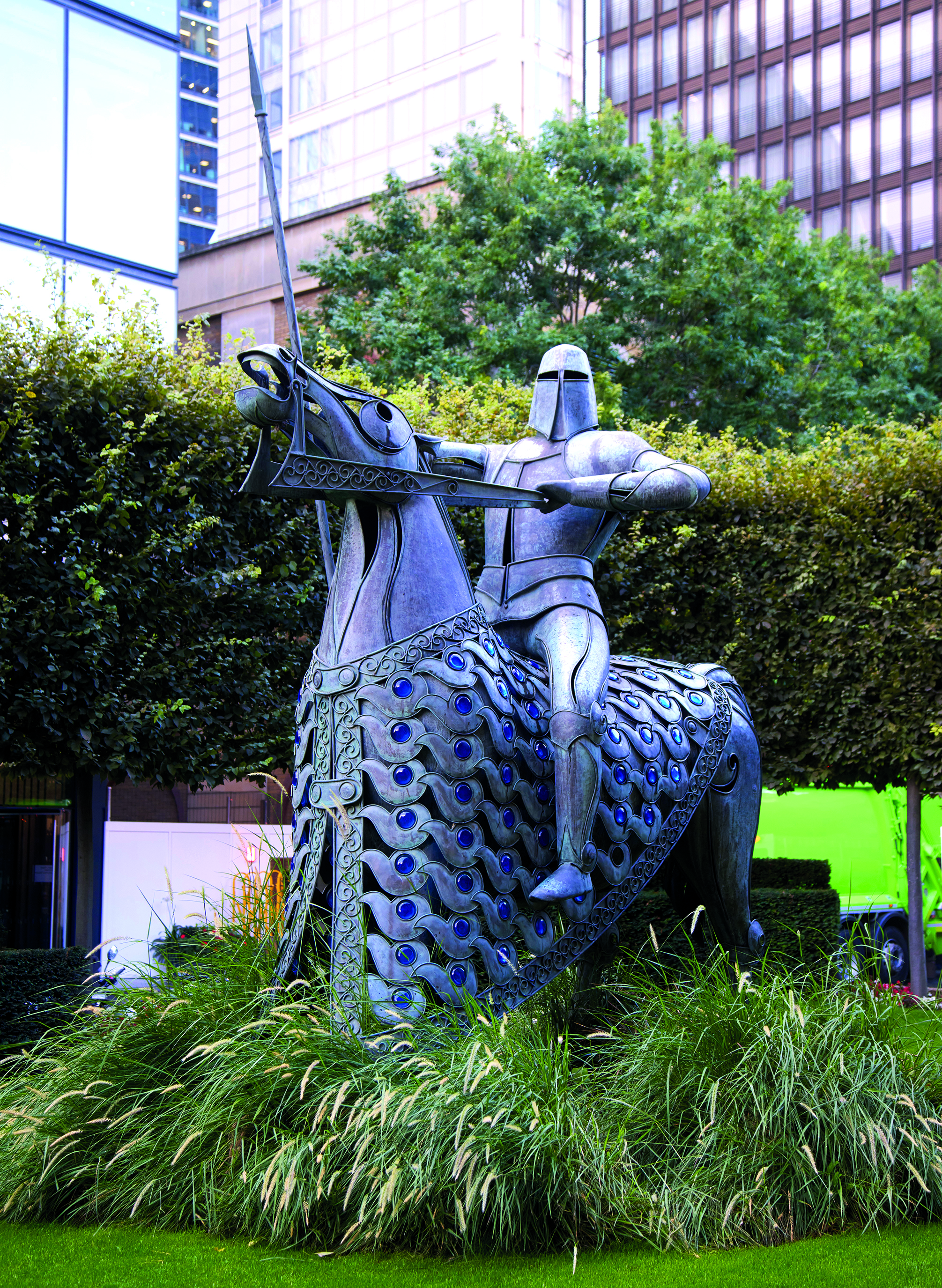
Equestrian statues commemorating military heroes are a common sight, but this one has a backstory steeped in Arthurian romance. The Cnihtengild was an order of knights established in the 10th century; to gain entry, an aspiring knight had to win three combats ‘one above the ground, one under ground, and the third in the water’ before ‘running with Speares against all commers’ at Smithfield where they had to triumph in three more fights. Created by sculptor Denys Mitchell, it is unusually crafted from beaten sheets of bronze rather than cast metal and the horse’s caparison, or decorative covering, is gloriously studded with blue glass roundels.
Where: Devonshire Square, EC2
Honey Lane bee
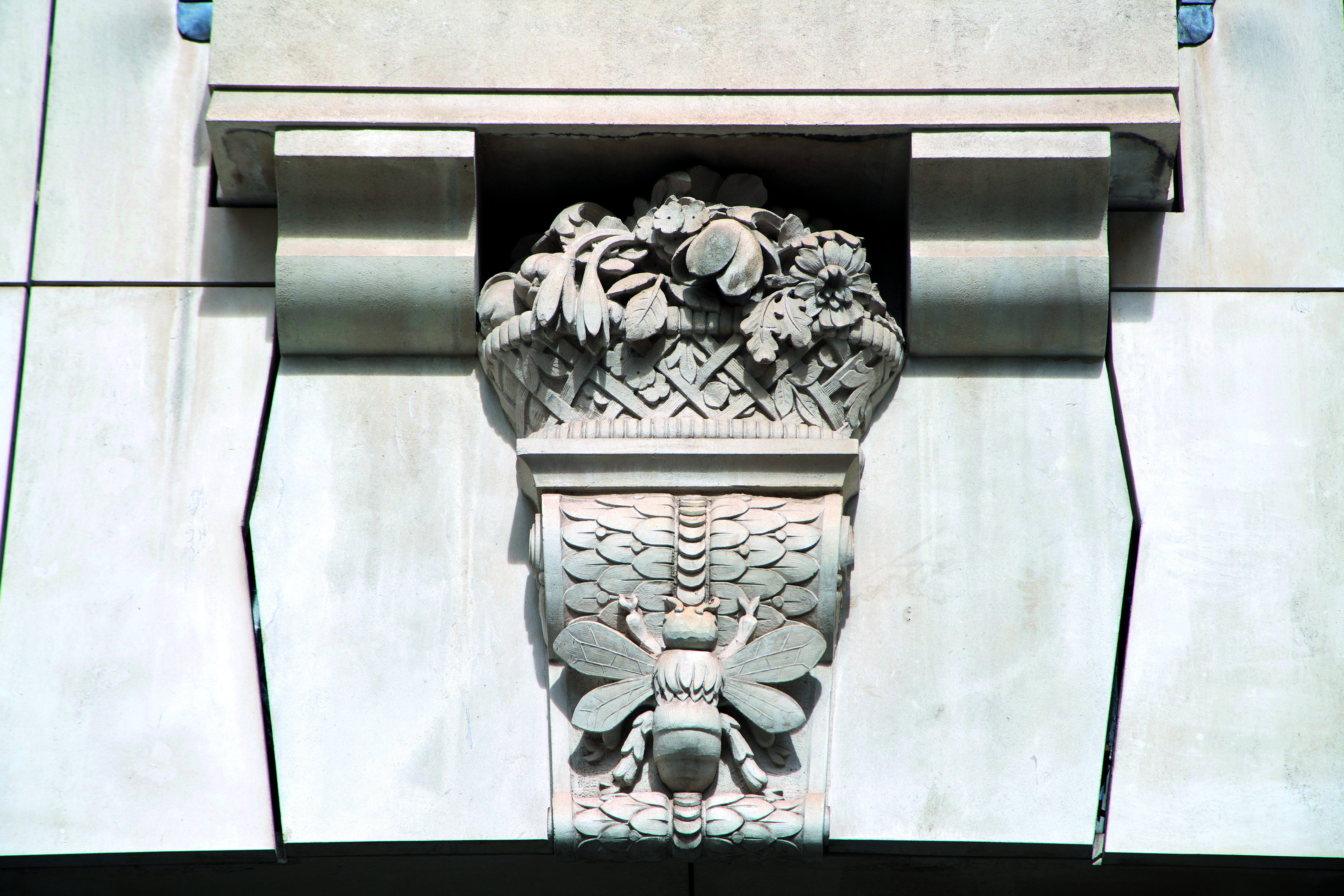
Venture into Honey Lane and discover an arch decorated with a charming stone sculpture of a bee eyeing a basket of flowers. The first recorded mention of ‘Huni Lane’ is in 1198 and is thought to refer to the beekeepers and honey sellers who once lived hereabouts. Medieval Cheapside was London’s main food shopping centre and the names of streets branching off it were a handy guide to what was sold where: Bread Street, Milk Street, Wood Lane, Poultry. Unlike the signage over supermarket aisles, these names have remained unchanged for centuries.
Where: off Cheapside, opposite St Mary-le-Bow, EC2
Goldsmiths’ Leopard
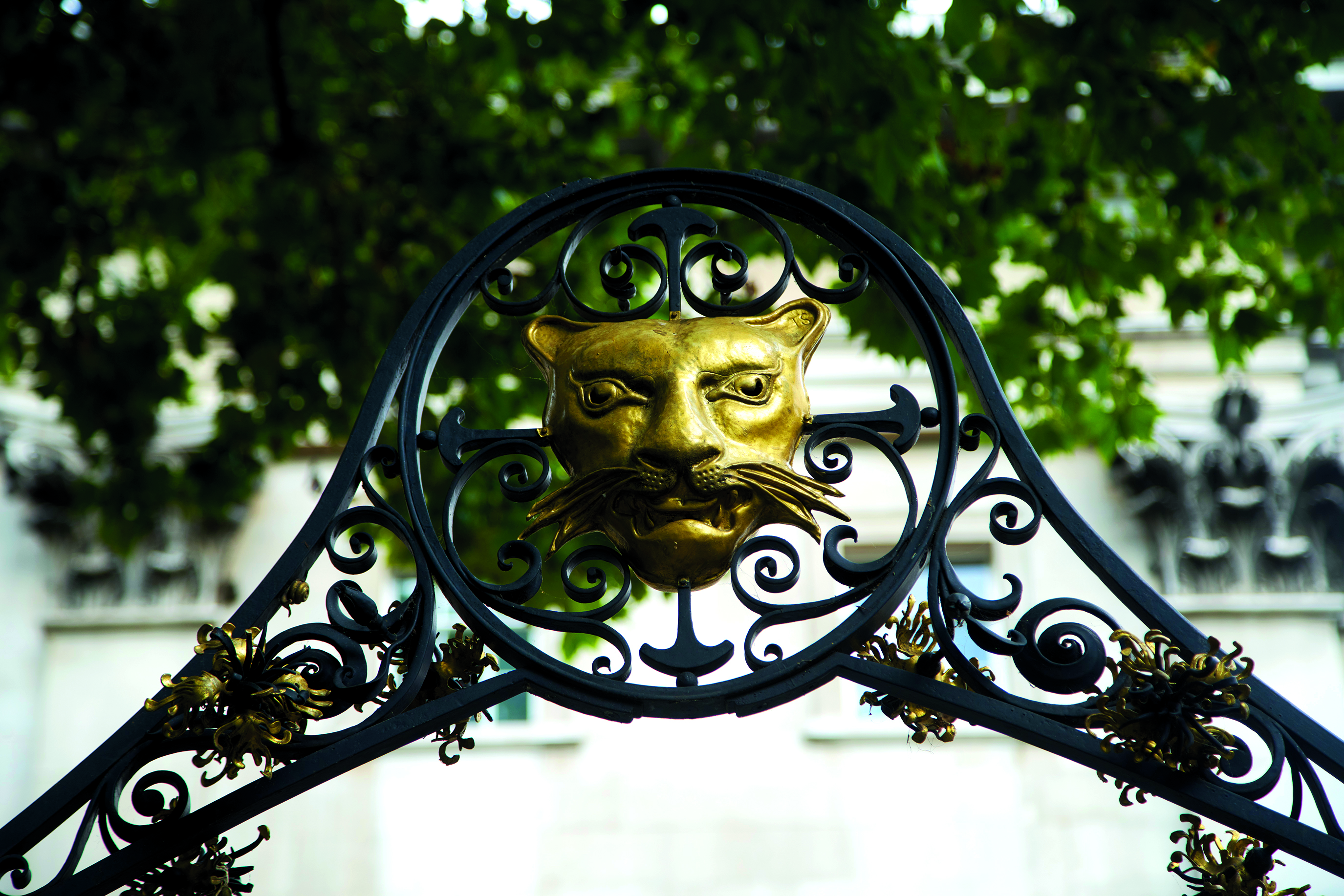
The leopard staring fiercely from the wrought-iron park archway is one of London’s most important and longlived symbols. For centuries, the leopard’s head hallmark has been stamped on London-made silver and gold. In 1300, Edward 1 made the Goldsmiths’ Livery Company Guardians of the Craft to oversee the standard of precious metals. Testing and stamping are still carried out at the Goldsmiths’ Company Assay Office within its 19th-century ‘hall’ – the origin of the term ‘hallmark’. Intriguing fact: the big cat symbol is actually a lion taken from the Royal Arms: in heraldry, a lion portrayed full-face is called a ‘leo-part’.
Where: Goldsmiths’ Hall, Foster Lane, EC2
Ayrton’s minotaur
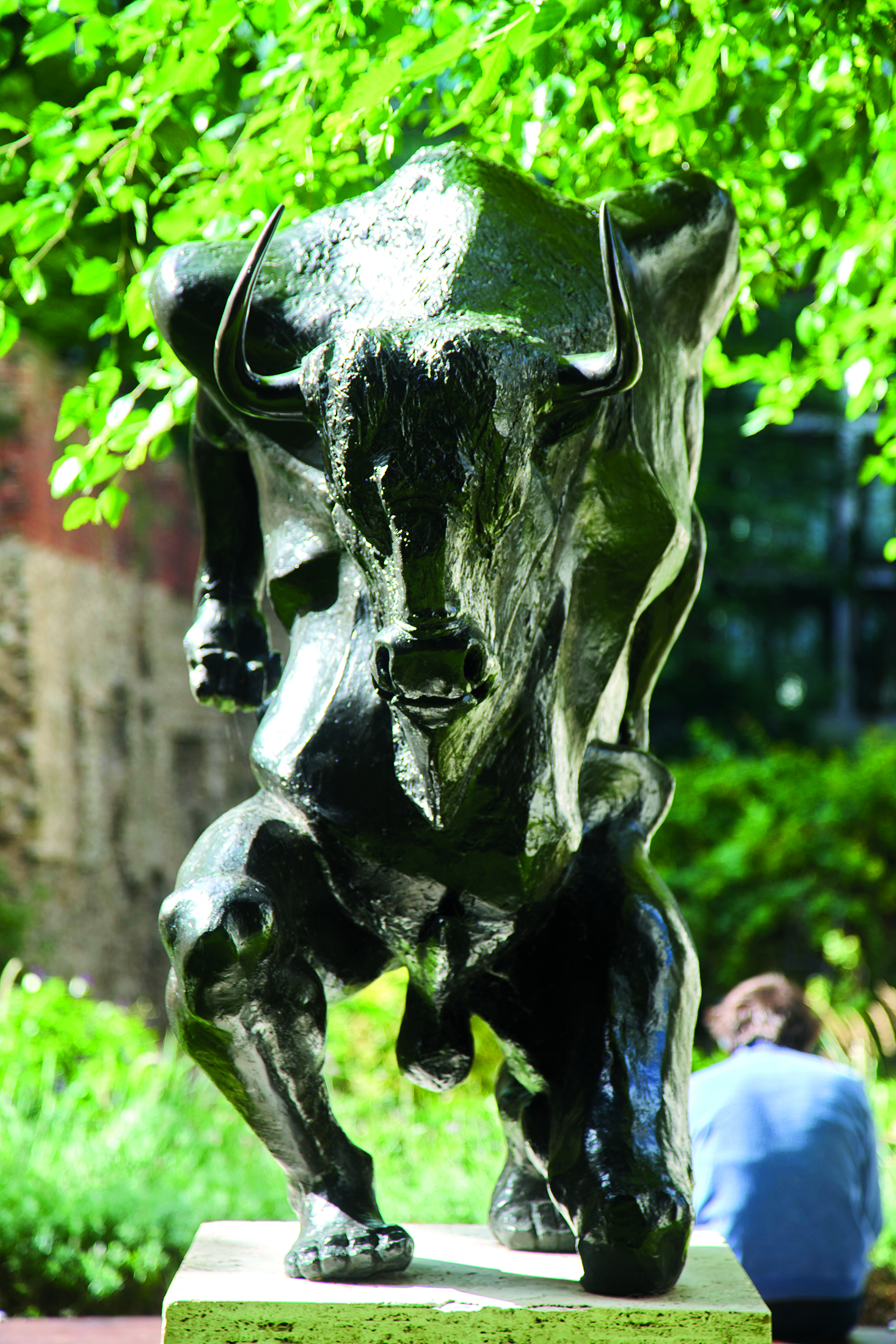
A bronze creature, half-man half-bull, kneels on the ground outside one of the City’s most beautiful gardens. It would be tempting to assume that he embodies the energy of a City ‘bull market’ but the title, ‘Minotaur’, identifies him as the mythical Greek beast. The work was created in 1969 by Michael Ayrton to sit at the centre of a huge maze on an American estate, just as the Minotaur of myth once dwelt at the heart of the Minoan Labyrinth. Ayrton was also politically active: at the age of 15 he travelled to Spain, eager to fight for the Republicans in the Spanish Civil War, only to be rejected for being too young
Where: Salters’ Hall Garden, EC2
Here be dragons…
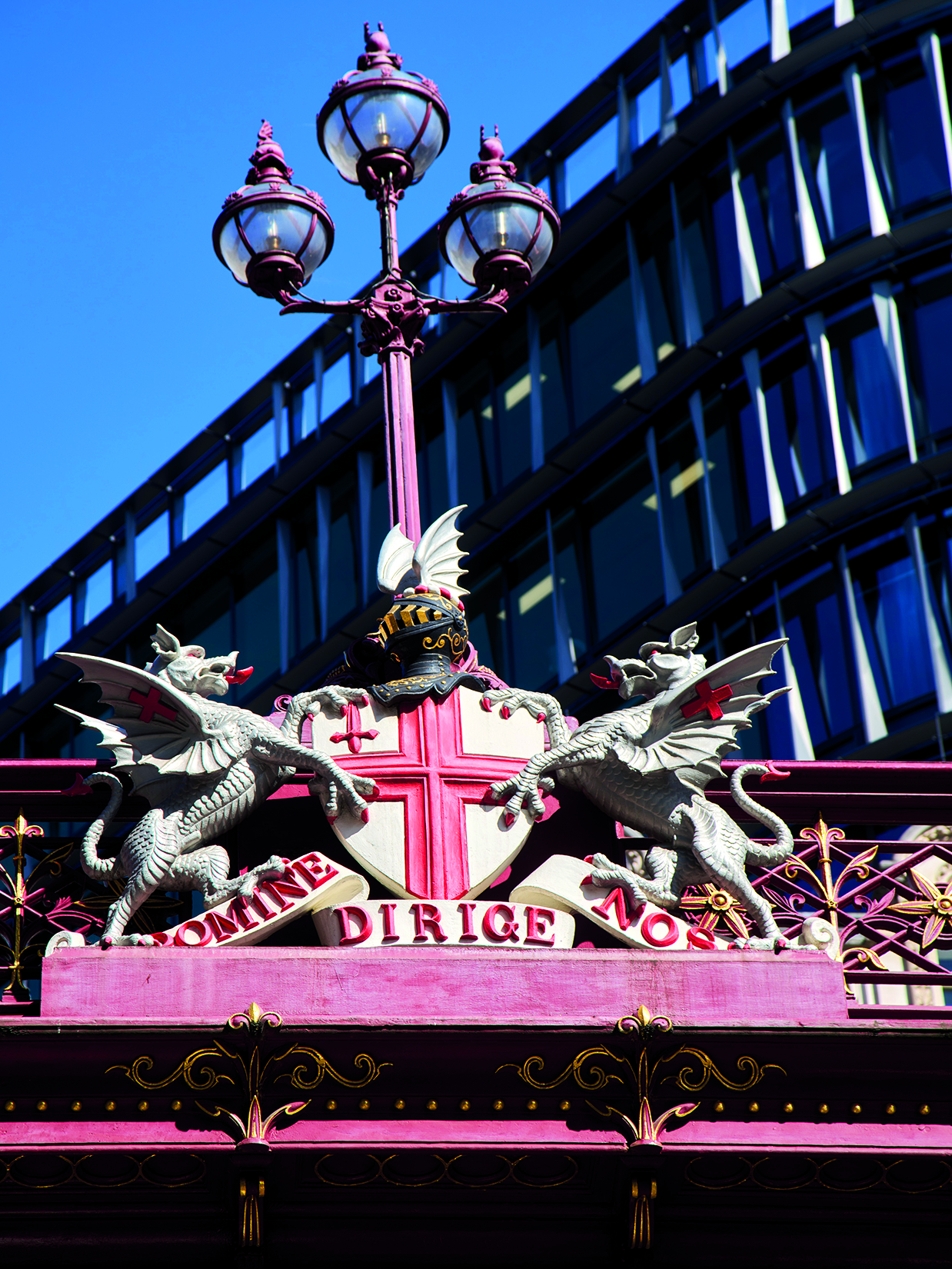
The City has its very own spirit animal, in the form of a fearsome dragon with a flaming tongue, which guards the City boundaries. These beasts – often misdescribed as gryphons – clutch the City’s shield, with the other foreleg raised, talons flexed to tackle invaders. Although they are thought to originate in the ancient legend of St George and the Dragon, they are relative newcomers to the Square Mile. When the Victorian-era Coal Exchange was demolished in 1962, the two huge iron dragons, which loomed over the entrance, were relocated to the western boundary on Victoria Embankment. Twelve smaller dragons of the same design were later stationed at key points around the City’s perimeter. If you’ve ever wondered why two of them stand at the South Bank end of London Bridge and Blackfriars Bridge, that’s because both river crossings are actually part of the City.
Where: The dragon stands atop Holborn Viaduct, EC1
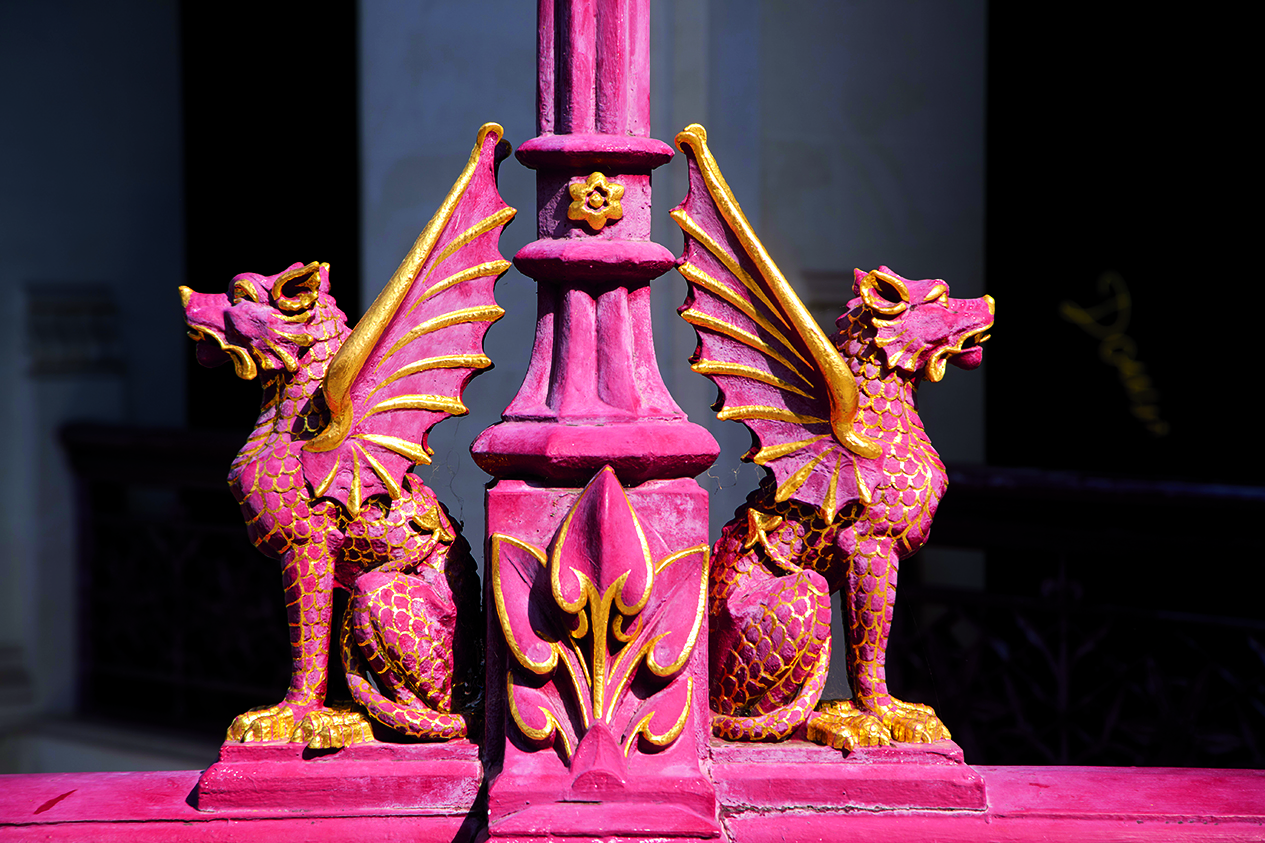
Queenhithe’s waving seal
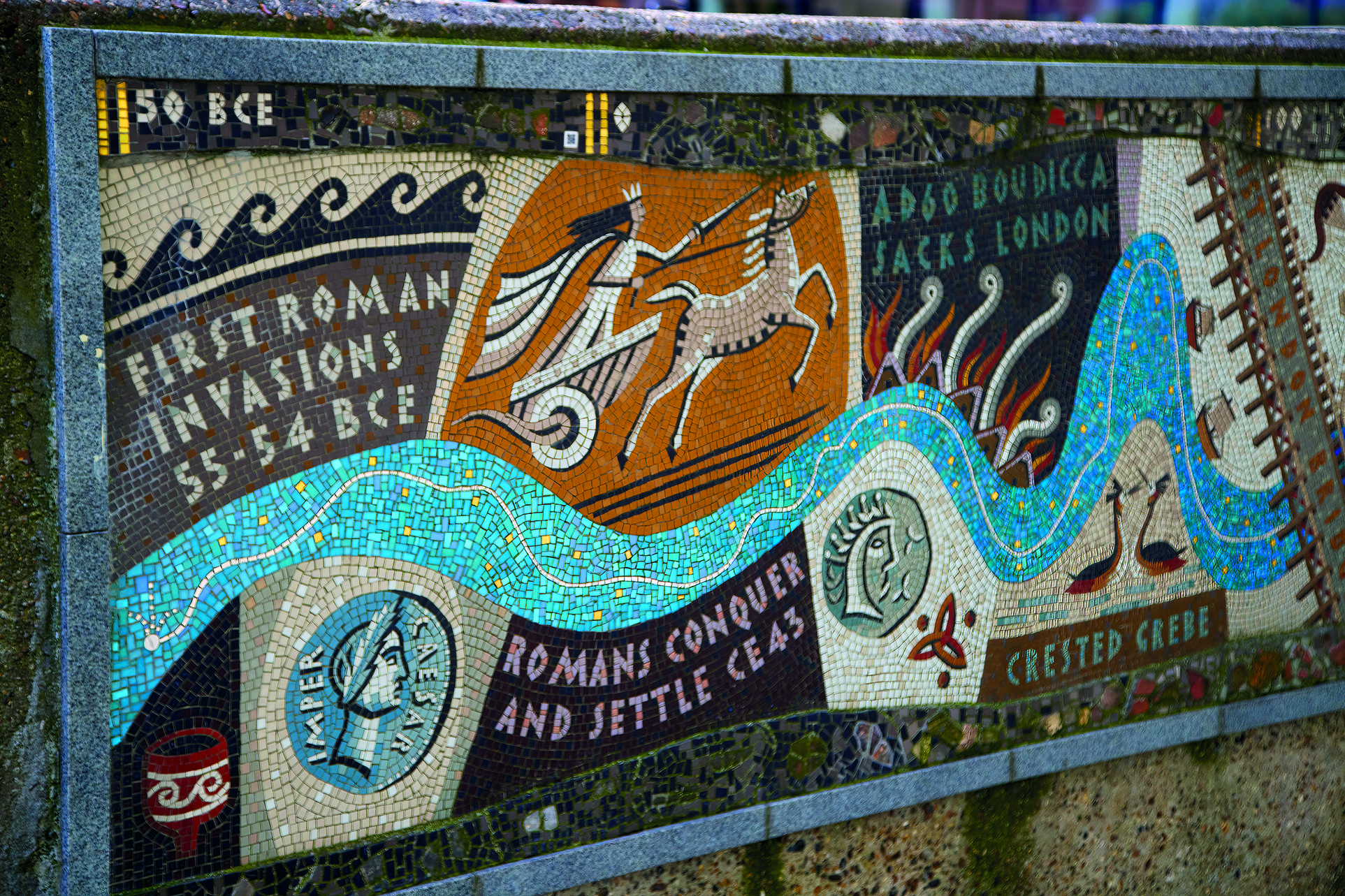
Next to Queenhithe, an Anglo-Saxon dock dating from 899, stands a 30-metre-long mosaic from 2014 depicting the City’s tumultuous history. Starting with the Romans’ arrival in 43AD/CE, the mosaic portrays invasions, rebellions, plague, fire and Blitz, and features characters like Shakespeare, medieval Mayor ‘Dick’ Whittington (with cat), and a trio of Queens: Elizabeth I, Victoria – and Matilda, the ‘Queen’ in Queenhithe. The mosaic’s border is cleverly composed of shards of pottery, glass and oyster shells mud-larked from the foreshore. At the ‘modern-day’ end, a cheeky seal waves its flipper from the Thames: this is no flight of fancy grey and harbour seals are a relatively common sight in the tidal Thames.
Where: Queenhithe Dock, EC4
The Ironmongers’ salamanders
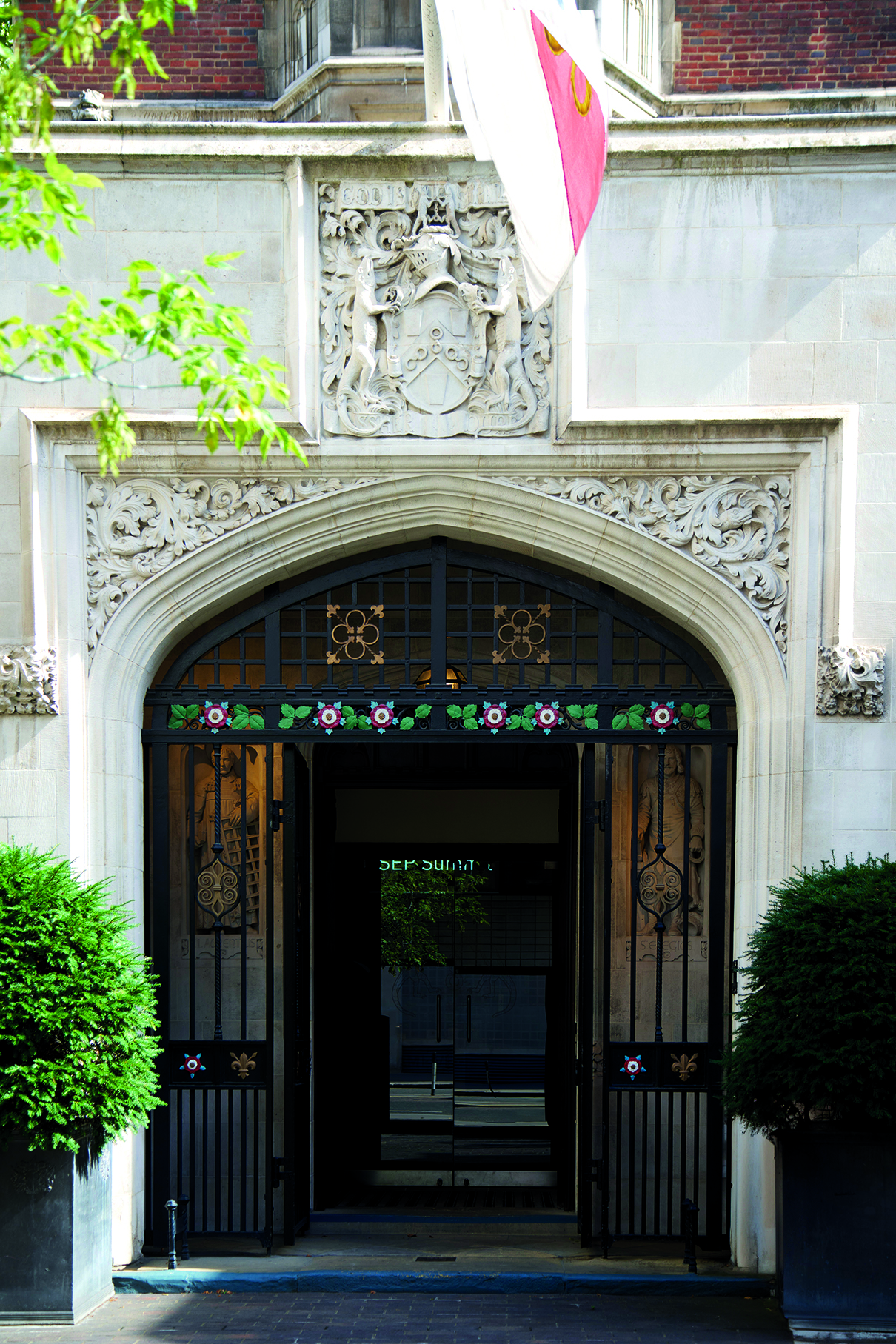
The Company of Ironmongers boasts the only City ‘hall’ in the Arts and Crafts style, which was popular in the 1920s. Although somewhat marooned by the concrete sprawl of the Barbican complex, it is a charming building that deserves a stop on your safari. Above the wrought iron gates sits a relief sculpture of the Ironmongers’ coat of arms: two lizard-like creatures which support the company’s crest. They are in fact salamanders: not reptiles but amphibious mammals, chosen because in the medieval era they were thought to be fireproof, an enviable superpower if your craft was the forging of metal items. Like the Goldsmiths, the Ironmongers had a key role in enforcing standards: in 1300 they took action against the smiths of Kent and Sussex over the quality of iron cart wheels supplied to the City.
Where: Shaftesbury Place, Aldersgate Street, EC2
Vintners’ swan
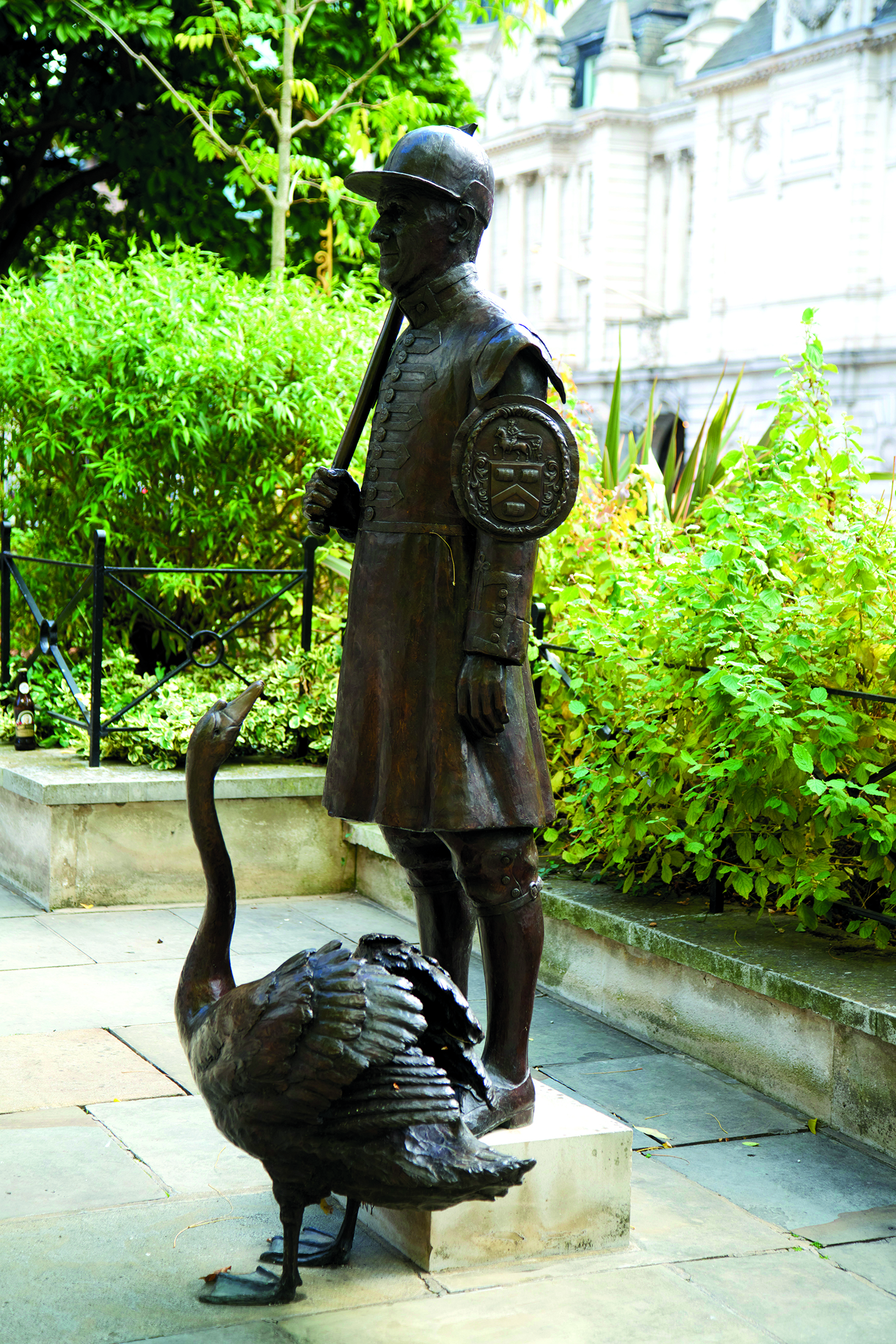
Crafted by Vivien Mallock, this bronze gent with a swan at his feet is the Vintners’ Barge Master, who helps to oversee the ancient City tradition of ‘Swan Upping’. All swans were once owned by the Sovereign and could only be eaten at royal banquets: stealing so much as a swan’s egg could land you in jail for a year and a day. But in the Middle Ages, the Crown granted a share of its swans to the Vintners and Dyers livery companies in return for a task that continues to this day. Every July, a flotilla of skiffs sets out upriver for the swan breeding grounds. The boats surround swans and cygnets and, on the cry ‘All up!’ lift them out of the water. In the old days, the swans’ beaks would be nicked to denote ownership – two nicks for the Vintners, one for the Dyers, the rest left nick-free for the Crown. King Charles still owns the UK’s 19,000 swans, but nowadays, upping is a conservation exercise, with swans ringed to monitor them and help injured birds.
Where: Outside St James Garlickhythe, Garlick Hill, EC4
The Eastcheap camels
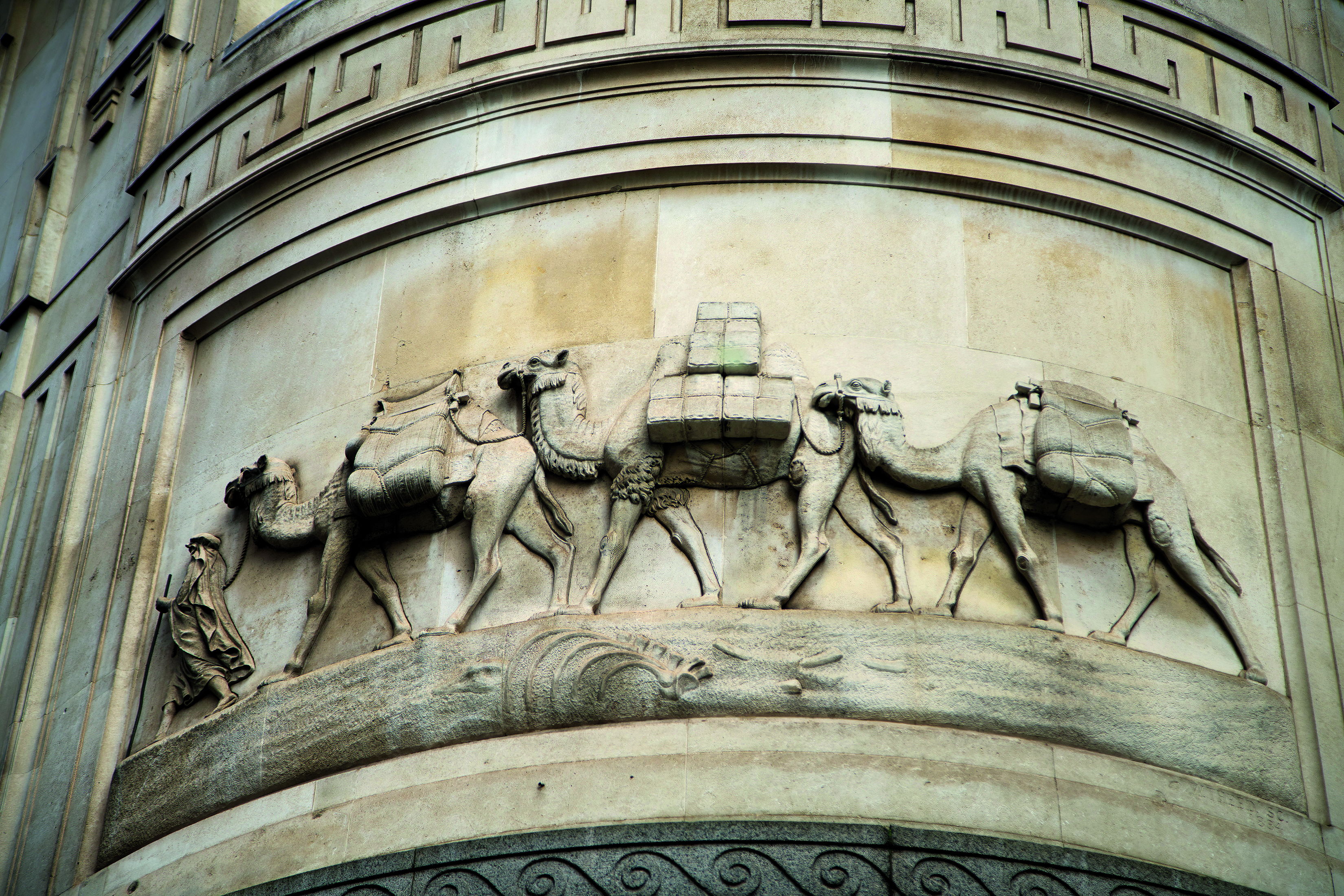
A camel train laden with tea, coffee and spices crossing a stone desert is an unexpected sight in a busy City thoroughfare, but this sculpted frieze is a faithful reproduction of the Camel tea brand trademark – right down to the bones of a dead camel in the foreground. It adorns the one-time HQ of 19thcentury tea importers Peek Brothers, who later drafted in George Frean to start a complementary business, manufacturing biscuits. Peek Freans is now widely credited with inventing the modern biscuit, including the Bourbon, Garibaldi and Custard Cream.
Where: 20 Eastcheap, EC3
